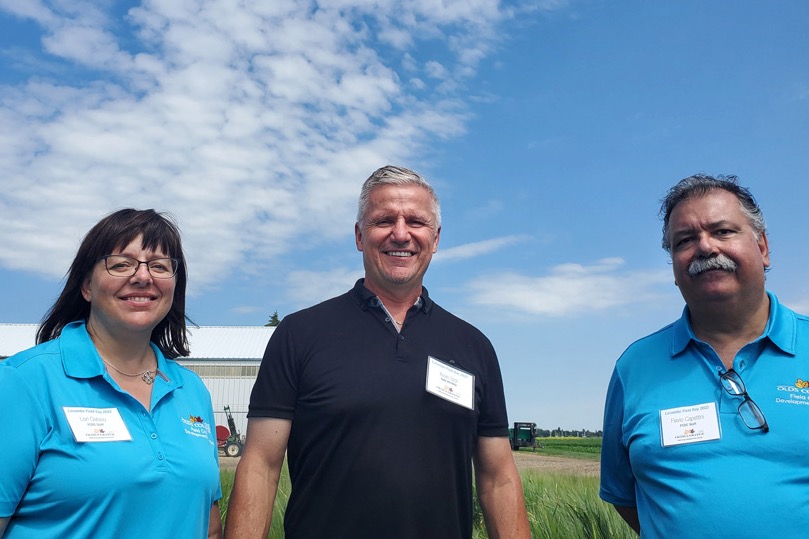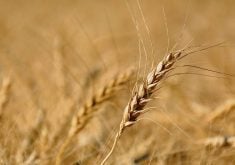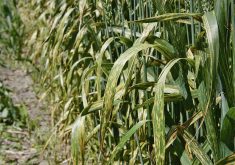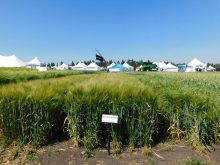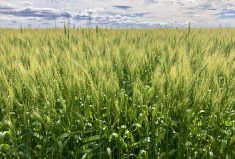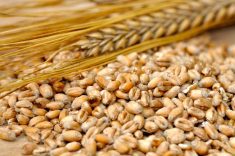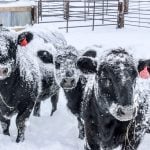Plant breeders have many challenges, but malting barley breeders have an extra one. Customers sometimes like their varieties so much that they’re reluctant to change to ones that are better for farmers.
“We are looking at things that are not only going to be good in production and give farmers higher yields and ultimately more marketing opportunities, but we are also so close to the industry that we are trying to get acceptance before those varieties hit the marketplace,” said Lori Oatway, a research scientist at Olds College during the Lacombe Field Day presented by Alberta Barley.
Read Also
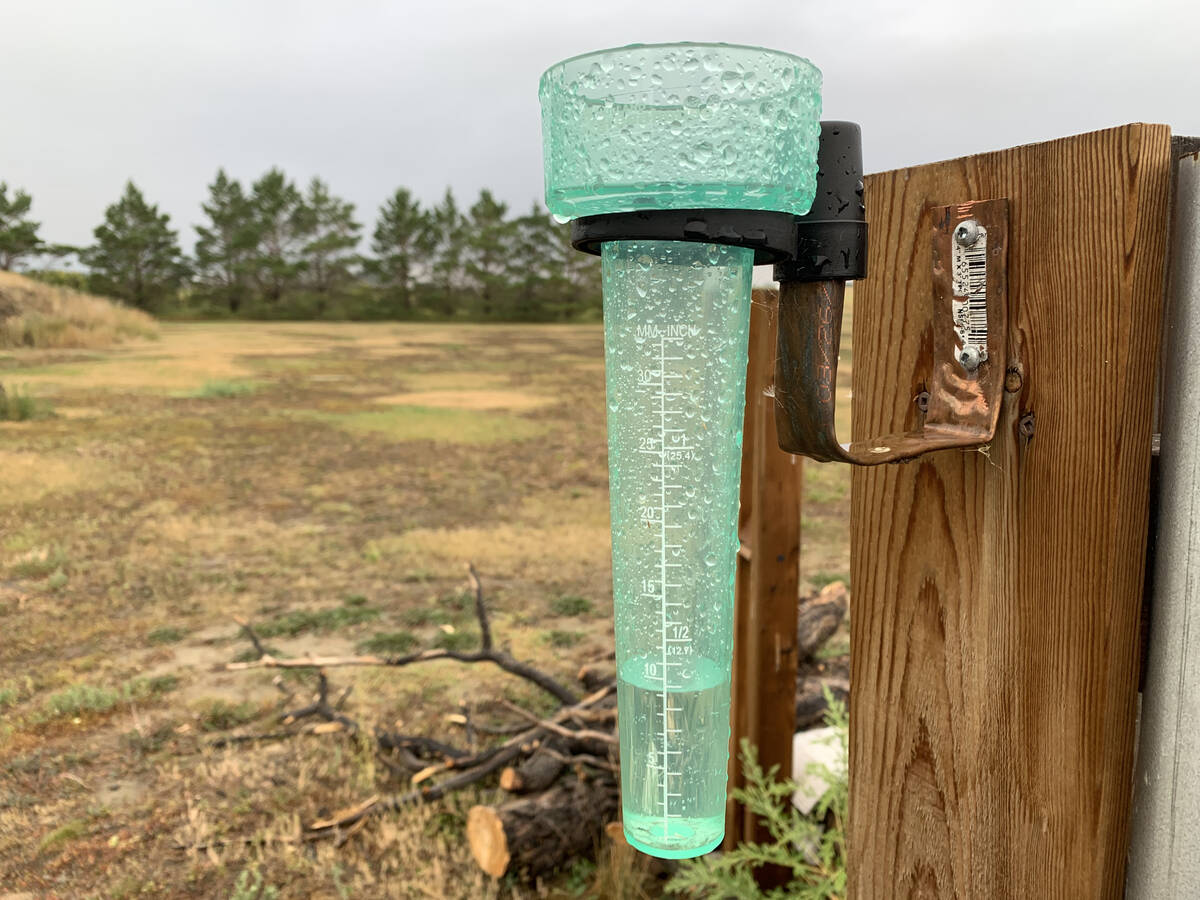
Western B.C., parts of Prairies received drought relief in October
Drought monitor for Western Canada for October
“For malting barleys, you must have the agronomics, which are what the farmer needs, but we need the industry to accept what we are releasing as well.”
Malting barley is used to flavour beer and spirits, and malt extract is used worldwide in myriad foods, including cookies, cakes, beverages and baby food. It’s used to enhance flavour, colour, fermentation and aroma while improving texture and shelf life.
Even for experienced farmers, malting barley can be a challenging crop requiring greater effort and co-ordination than other crops, says Alberta Barley on its website. Malting barley requires exact production, good harvest conditions and proper storage to meet industry quality expectations. The crop commands premium prices for successful growers.
Better disease resistance
“We are still looking at about 10 years, but if we can do more speed breeding, if we can get the varieties out quicker, when we have the support of our industry, maybe we can speed up that acceptance as well.”
Breeders are taking varieties with high malting quality and crossing them with strains that have better agronomics and disease resistance.
“We also have our biotechnology programs, so they are able to screen those lines and see if there are specific disease markers,” Oatway said. “So that’ll speed up our detection of new lines with that higher disease resistance.”
“We also need drought resistance,” said Flavio Capettini, a research scientist and malting barley supervisor at Olds College. “Good lodging resistance is needed in malting barley, and upcoming varieties will lead to more profit for farmers and better quality for consumers.”
The Olds College Field Crop Development Centre has been developing high-quality cereal varieties for feed, forage, malt, food and bio-industrial uses since 1973. It’s recognized as a world-leading research site focusing on barley and triticale varieties, and maintains a vast inventory of genetic material.
Open to change
“I think the main message we want to communicate is that in the past, in the malting industry, farmers have always spurned us, saying we’ve been slow to make changes,” said Kevin Sich, supply chain director at Rahr Malting.
“We see it — the brewing industry is becoming more open to change in varieties because agronomics, the high price of land — if barley is going to stay competitive, we must get better genetics. These guys are on the right path here and we need to help take it to market.”
Sich said more brewers should visit the Olds College site to examine new malting barley varieties, which could kickstart change in the industry.
“When we go to Japan, they tell us pretty much what varieties they want, and we have to make a hard sell to get them to change. And that hard sell could take three years. So, we want to be sure that when we take a barley variety, and we put effort into it, it’s going to make it.”

